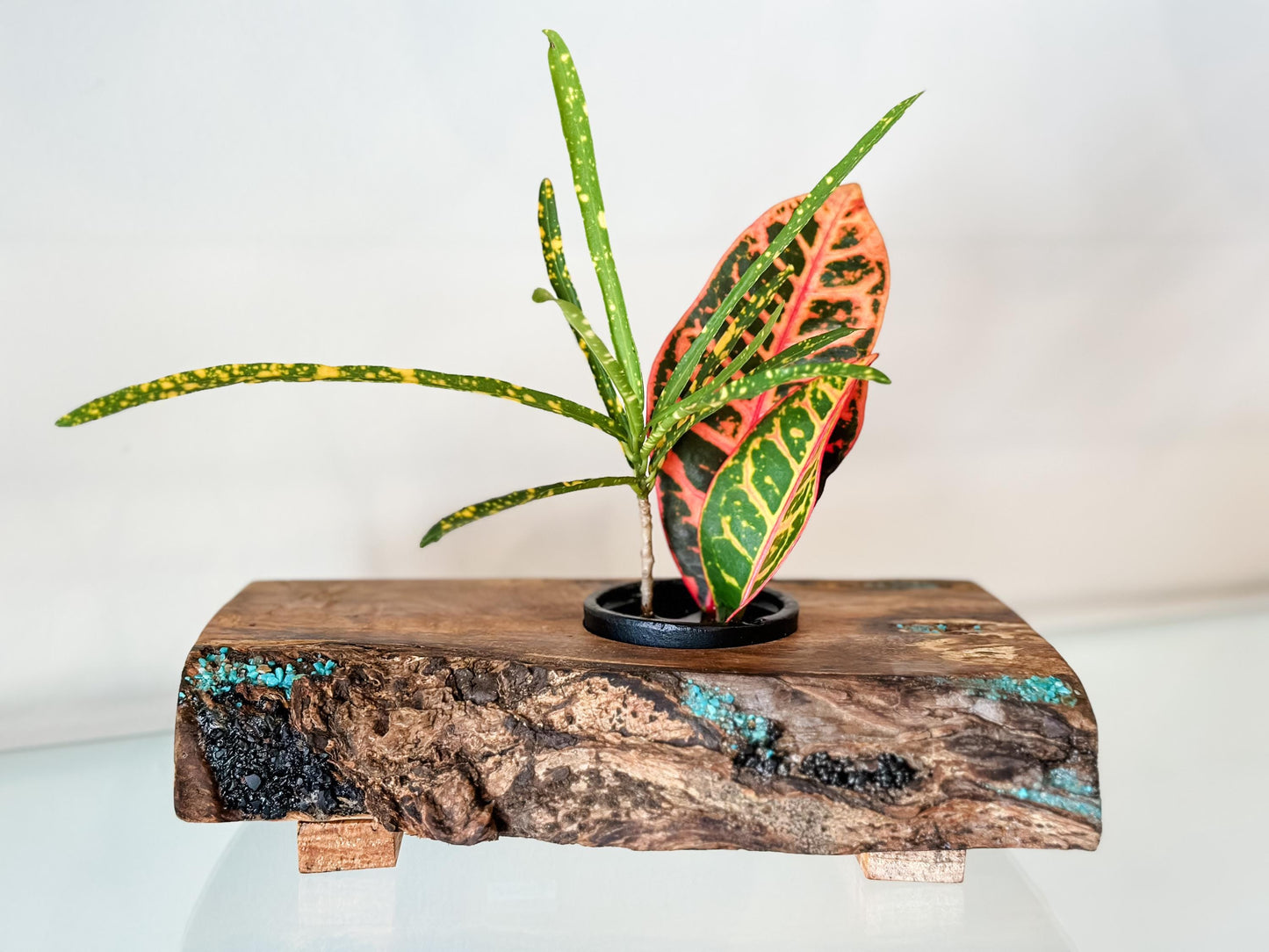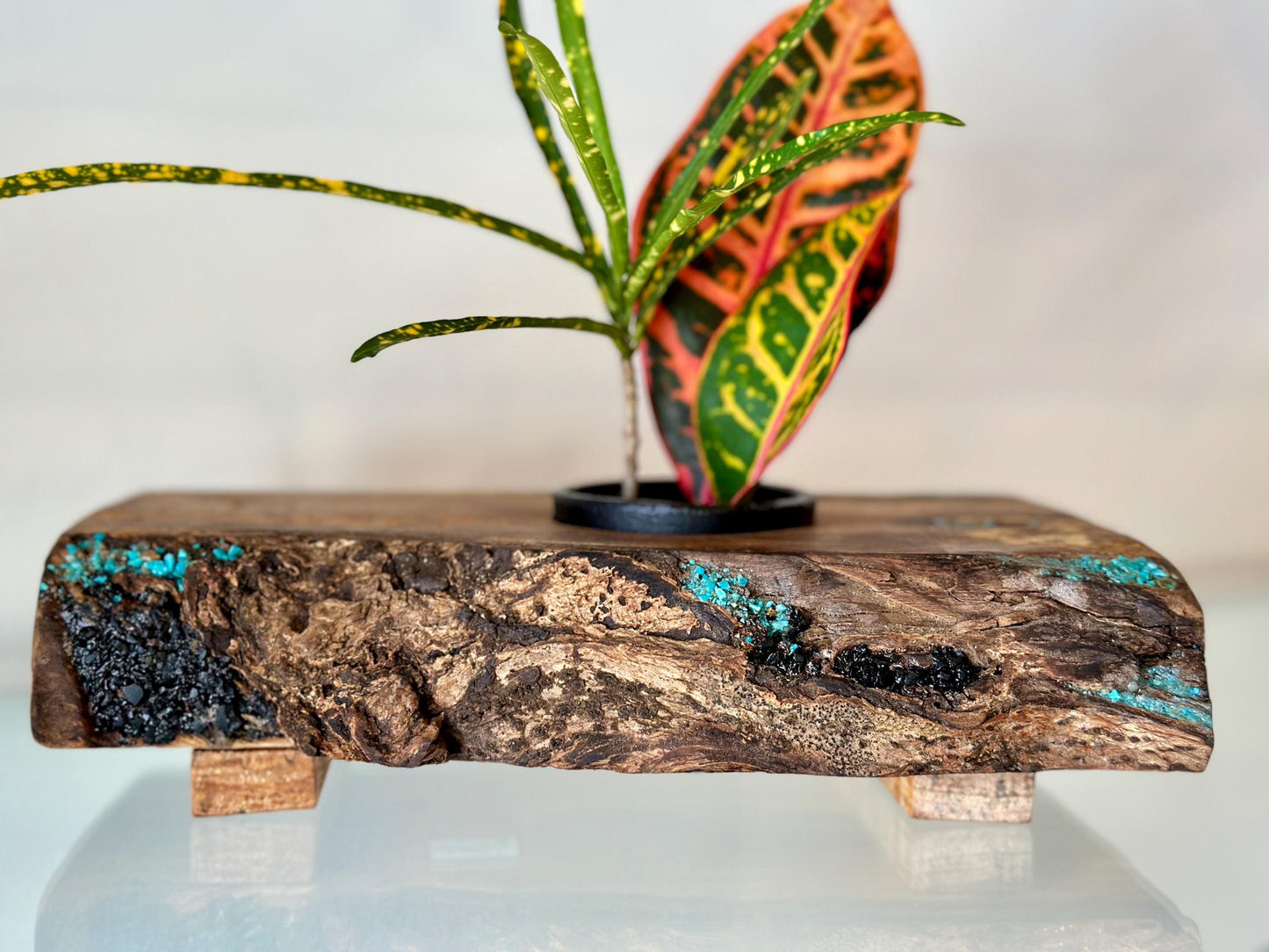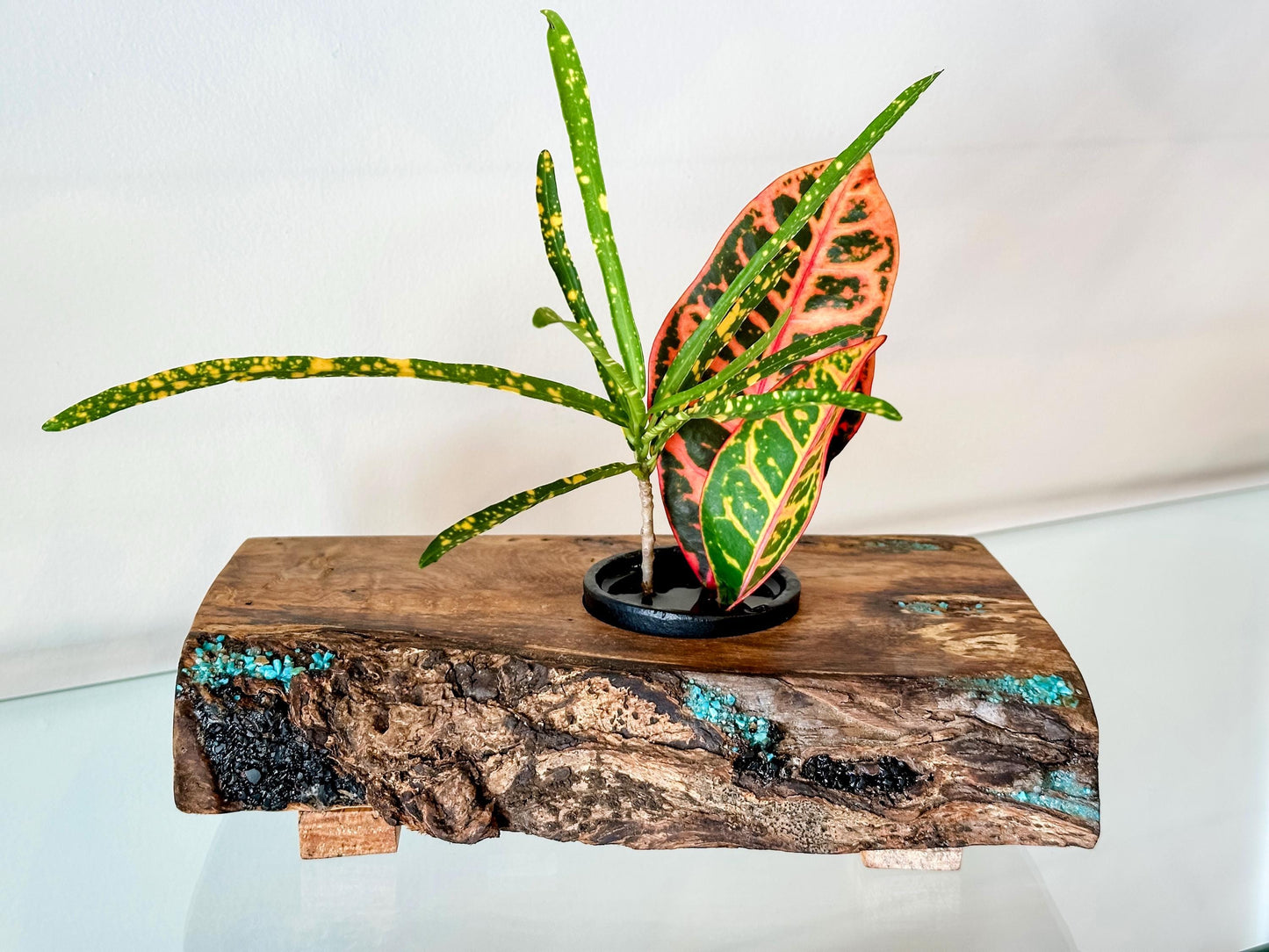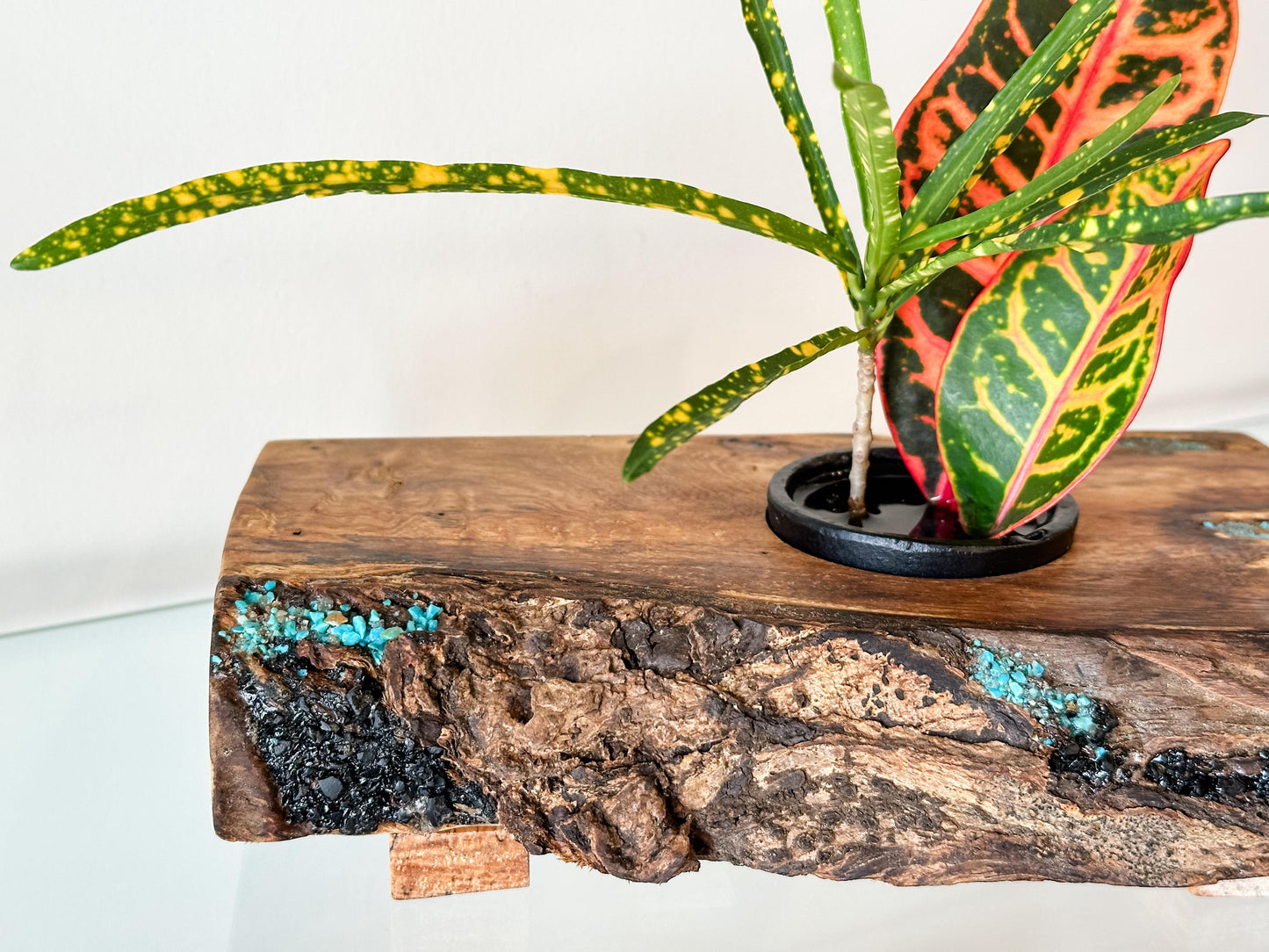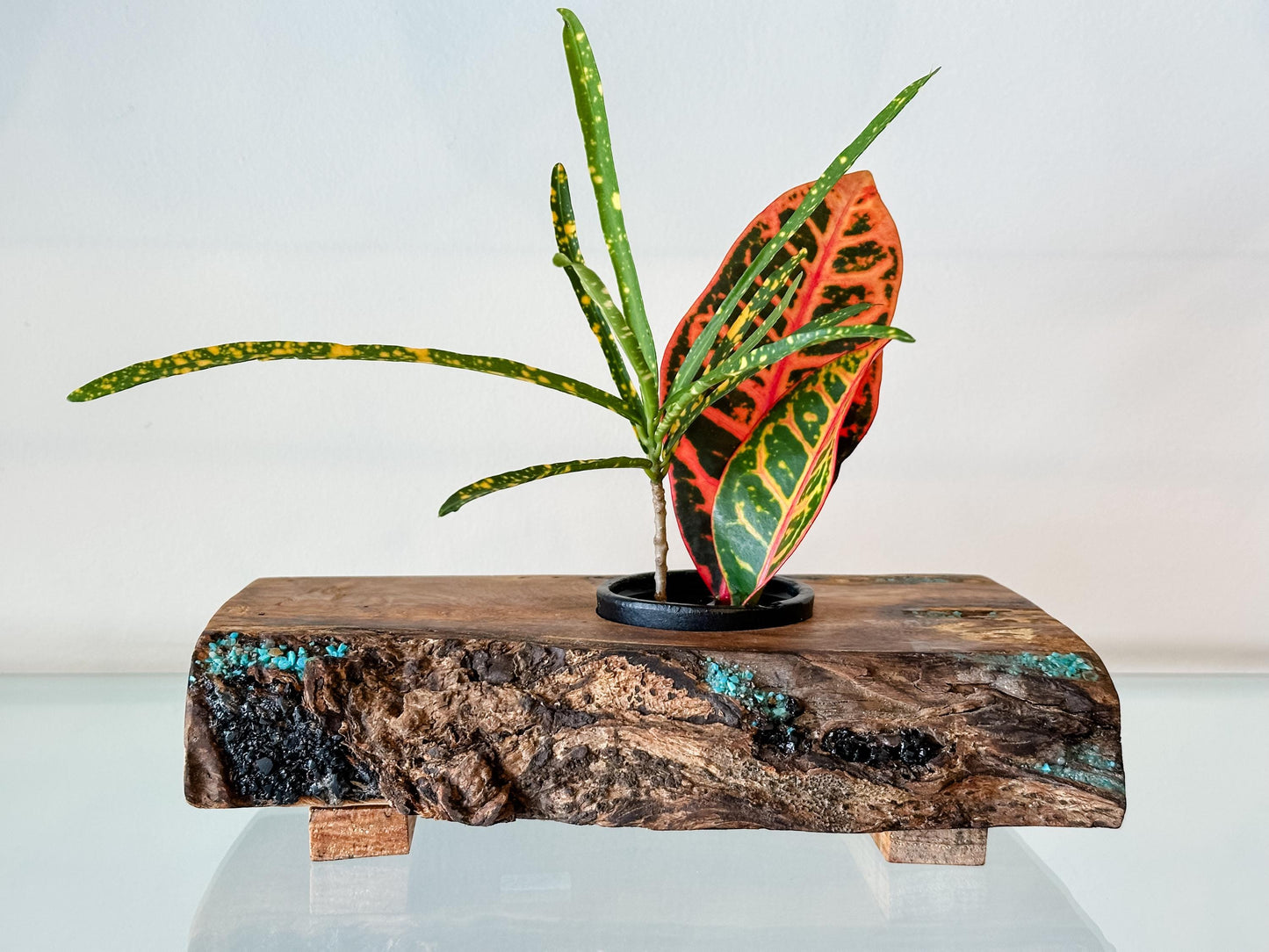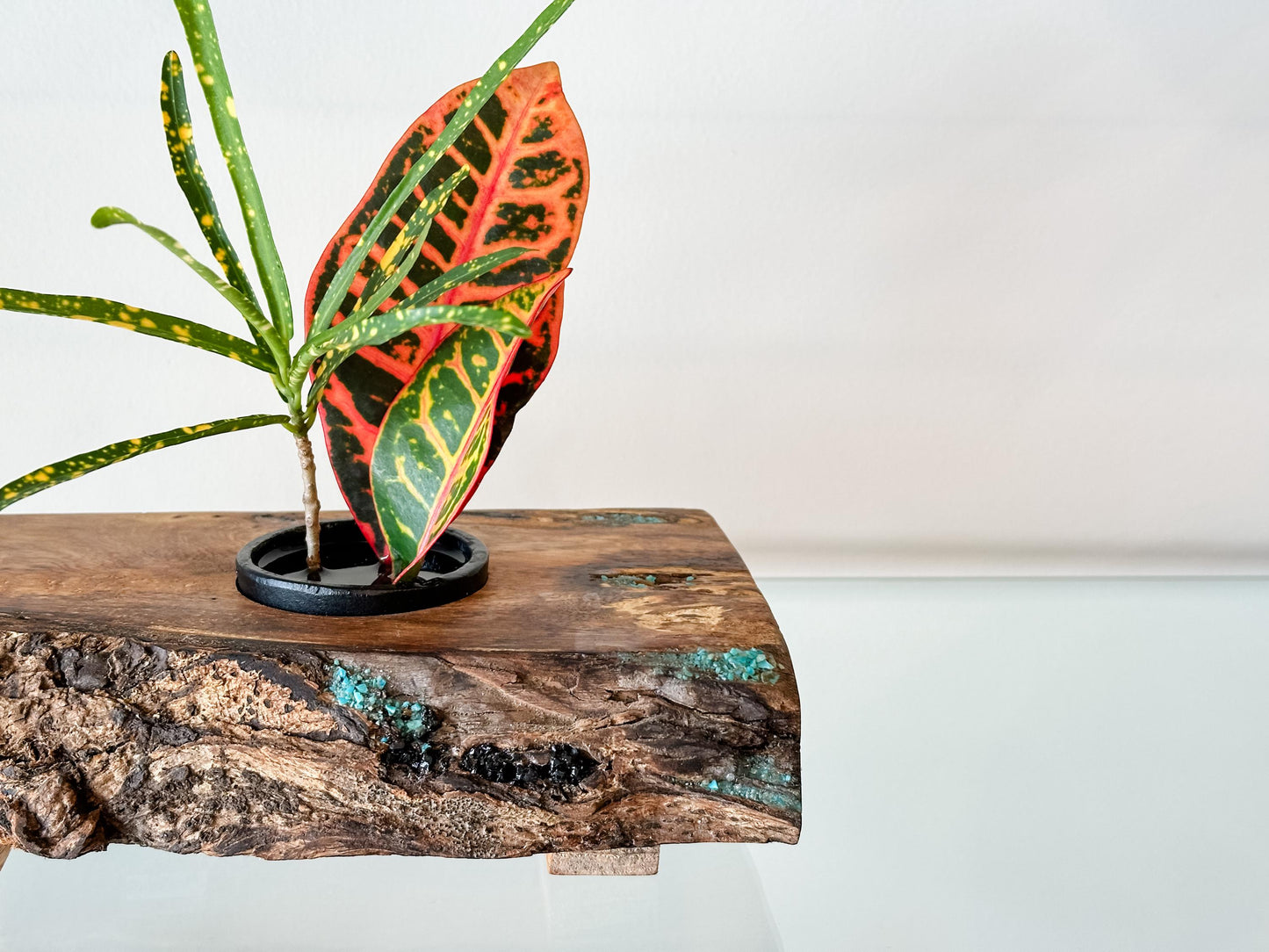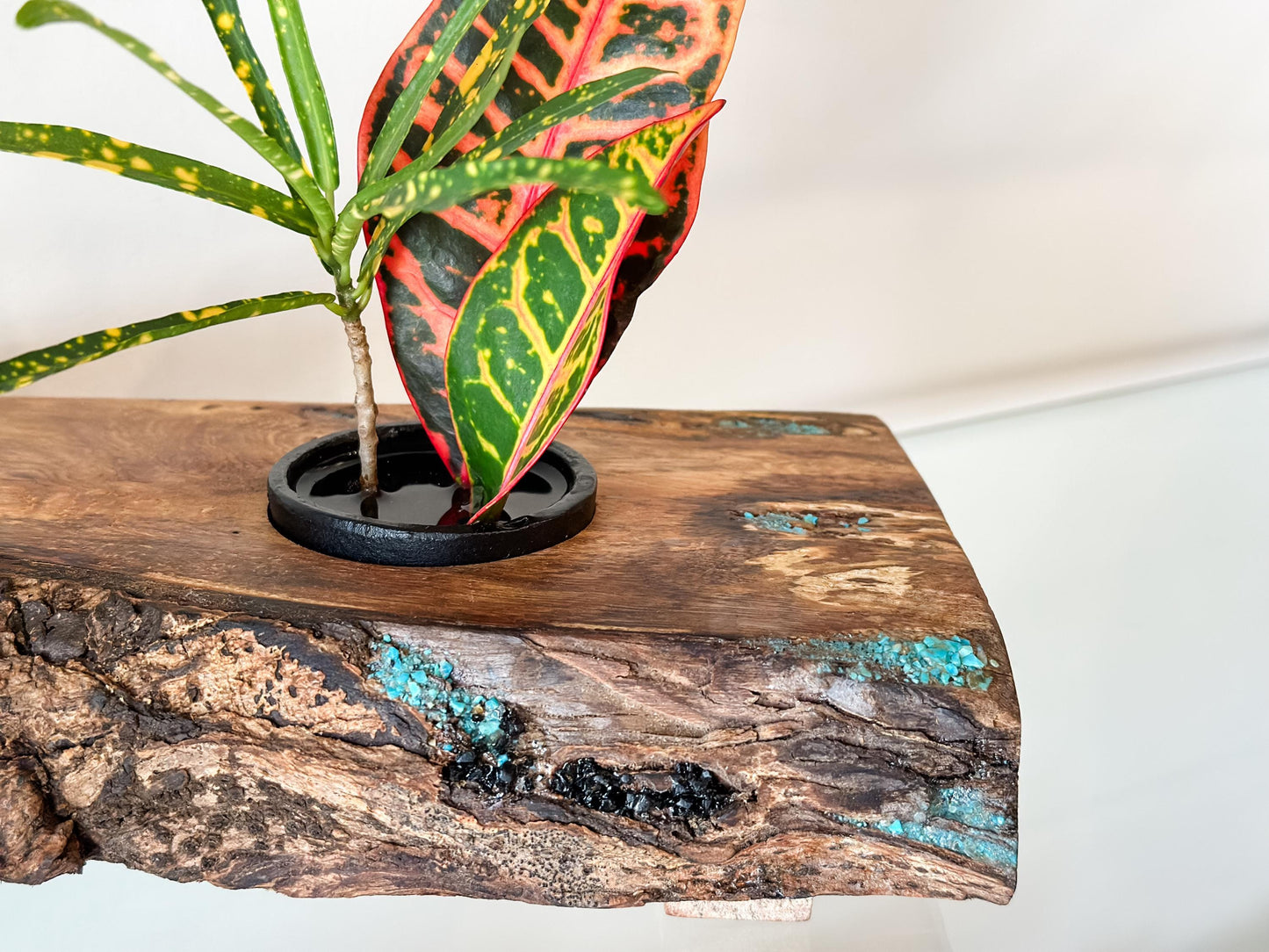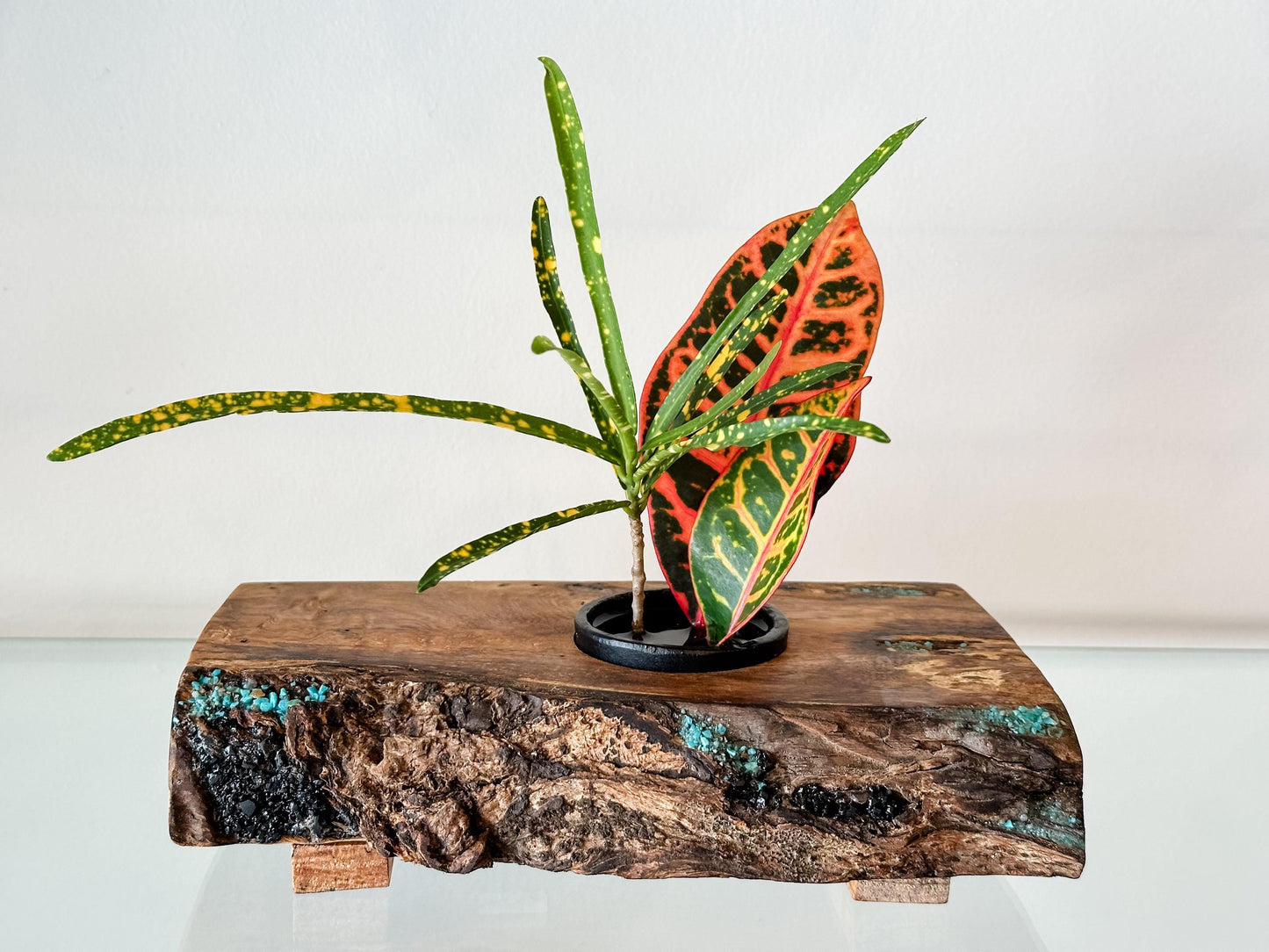1
/
of
10
Llosh Winne Art and Design
Handmade Banyan Wood Ikebana (Japanese Style Vase) with Bark Inclusion and Turquoise and Anthracite Inlay, Wood Ikebana, Made in Hawaii
Handmade Banyan Wood Ikebana (Japanese Style Vase) with Bark Inclusion and Turquoise and Anthracite Inlay, Wood Ikebana, Made in Hawaii
Regular price
$395.00 USD
Regular price
Sale price
$395.00 USD
Unit price
/
per
Couldn't load pickup availability
This stunning wood ikebana was handmade on the Island of Hawai’i from banyan wood, sustainably-sourced from a local banyan tree. The artist hand-carved the wood log to shape the ikebana, maintained the bark as a decorative inclusion, then added real blue turquoises gemstone and black Alaskan Anthracite inlay as a complementary contrast with the natural wood tones.
An Ikebana is a Japanese style vase. Ikebana is the centuries-old Japanese art of arranging flowers. The practice, which roughly translates to “making flowers come alive,” uses carefully selected blossoms, greenery and other flora to convey a specific feeling or emotion to an observer – just as a painting or sculpture might.
“Contact with nature is known to improve mental health, and even a few minutes of flower arranging can bring a calm, almost serene state of being. The simple joy of ikebana flower arranging comes from looking in nature for inspiration and new ways to experiment with putting together flowers to display at home. Part of the Japanese notion of wabi-sabi – the Buddhist belief that there is beauty in imperfection – ikebana is the very definition of a mindful activity and can be incredibly relaxing.” (91Magazine)
“With a history spanning over 600 years, ikebana remains a cherished tradition in Japan, passed down from generation to generation as a way of connecting with nature and expressing creativity. This specific type of flower arranging has evolved into a highly respected art form that reflects the Japanese aesthetic sense and philosophy, which emphasizes simplicity, understated elegance, and a respect for nature. Ikebana is not simply about arranging flowers, but creating a harmonious relationship between the natural materials used in the arrangement and the space around them.” (Architectural Digest)
The art of ikebana originated long ago in Japan, around the 6th century. It all started when Buddhism, a religion from China, was introduced to Japan. Buddhist monks began offering flowers on temple altars to worship and show gratitude for the beauty of nature. This practice laid the foundation for ikebana as an art form. (Sakuraco)
Share
